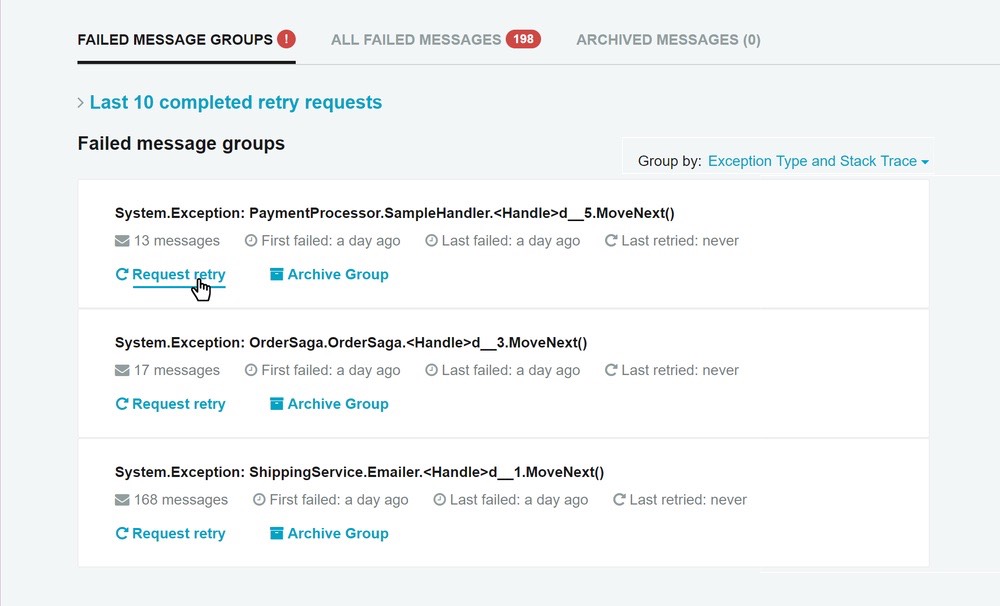
A better approach to building healthcare systems
Healthcare systems need to be reliable and robust. After all, lives could be on the line. But they also need to navigate an increasingly complex landscape of regulations and integrations. New approaches to system architecture are needed to deal with those challenges.
Learn how, by building a system with NServiceBus and the Particular Service Platform, you will be able to:
- Protect mission-critical data by building a system with reliability baked in.
- Reduce the stress of changing regulations with an architecture designed to manage complexity.
- Integrate easily with multiple external systems.
- React quickly when something goes wrong.
Protect mission-critical data
When you’re dealing with patient outcomes, reliability is extremely important. Even when not dealing directly with people’s lives, healthcare systems typically involve lots of money or lots of liability.
In none of those situations do you want to say "We lost the data."
Distributed systems built on HTTP using RPC communication (i.e. REST) are inherently at risk of losing data. If the HTTP call fails, or if a database has a deadlock, the data is gone.
Even worse, what if an unreliable network causes an HTTP request timeout? Did the server successfully process the request, but then time out while sending the response? Did the server never receive the request in the first place? There’s no way to know.
In a healthcare system built with NServiceBus, your data is recorded immediately to a message in a queue, where it is safe. If anything fails while it is being processed—if a server crashes, if the database is down, or if a third-party service fails—the message goes back to the message queue and waits to be processed again.
When your data is kept safe, it can save money, prevent lawsuits, or maybe even save lives.
Watch this video for a better picture of how failures can lead to losing patient data or other critical health care data, and how using NServiceBus will keep that data safe.
Reduce the stress of changing regulations
Health care may be one of the most regulated industries in existence, and with good reason. Concerns around patient safety and privacy must always be held as paramount.
Even so, keeping up with an always-changing regulatory environment can be complex to manage. Maintaining compliance with regulations such as HIPAA and ISO 27799 involves careful cooperation with lawyers and frequent code changes to turn written regulations into actionable software policies.
Large codebases based on complex business requirements tend to evolve over time to be highly coupled. What might be maintainable on a smaller scale becomes more and more unwieldy as the codebase grows. Small code changes have the capacity to break other parts of the system until we are spending more time testing these changes than delivering new features.
Designing a system with NServiceBus means using asynchronous messaging and the publish/subscribe pattern to keep coupling in the system to a minimum. Every meaningful business state is an event, and new functionality can often be added just by adding an additional subscriber to an already-existing event.
Each message handler concerns itself only with one simple business decision, and any consequences of that decision are communicated using additional messages. That means when there is something wrong with any one handler, the problem is localized and easily diagnosed—you don’t need to spelunk through hundreds of lines of heavily coupled business logic to figure out what’s wrong.
So it’s easier to build a complex system to adhere to regulatory requirements, and much easier to evolve that system as the regulatory environment changes, without having to rewrite large sections of the application.
In short, NServiceBus forces you to write better code that will be easier to maintain and extend in the long term. You can read more about this in our blog post Empires fall: Decentralize your code to avoid total collapse .
Integrate with external systems
In healthcare, systems rarely operate in a vacuum. Often, your software system will need to pull data from, send data to, or sync data with other systems.
Developers in the healthcare industry also know that the mainframe, far from being a relic of an age gone by, is still alive and well, and we need to talk to these systems as well. Often, this integration happens with batch jobs, which are prone to failure in the middle of the night, “somewhere” in the middle.
How do you recover from failed batch jobs? Usually, quite painfully. You’ve got to dig into the logs, figure out exactly how many thousands of records got processed successfully, the one where it failed, and then how to restart the job at exactly the right place to avoid thousands of duplicates.
In an NServiceBus system, that’s not a problem, because you don’t need batch jobs for integration anymore. When you turn each record into an individual message, only the one problematic record fails, and is moved aside to an error queue. You can see the exception and even fix the malformed message directly in ServicePulse and then just put it back in the queue to process again.

React quickly when something goes wrong
Errors are inevitable. But when they occur, they need to be diagnosed and fixed quickly. The stakes might be an expensive drug trial, or even someone’s life.
When you use the NServiceBus you also get the Particular Service Platform, which includes our message monitoring tools that make it easy to see when errors have occurred.
In ServicePulse, you can see all failed messages, grouped by message type and exception. You can see the stack trace without having to hunt through log files, as well as the message body (i.e. the data) that led to the exception in the first place. With these tools in hand it’s much easier to track down the cause of the bug in the code and fix it.

Once the fix is in place, all of the failed messages of the same type—as there could be dozens or hundreds—can be replayed easily in one batch. Many times, end users don’t even have to know there was ever a problem!
A Particular-based system even maintains an audit trail of every message successfully processed. In more complex failure scenarios you can visualize your system using diagrams generated from audit data. This allows you to gain the high-level overview that makes it easier to diagnose complex problems.



